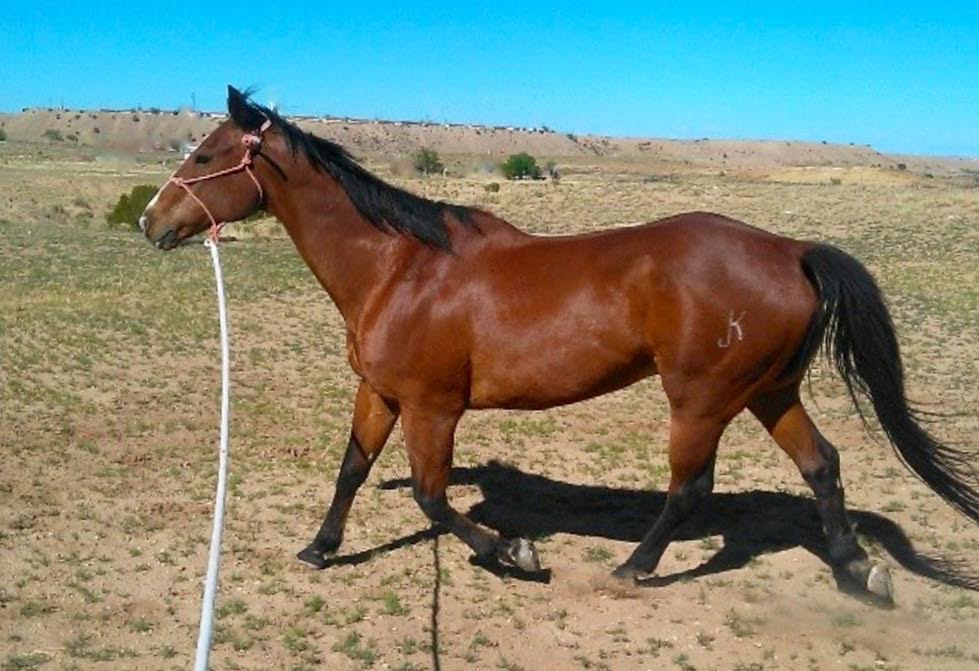Jason Parrish, Navajo Painter

Opening Show Friday, April 27
Jason Parrish grew up in rural Western New Mexico, the oldest son in a ranching family, and learned to ride a horse before entering school. Thirty years later, Jason still rides, but he spends more time including these steeds into his award winning paintings than he does in the saddle. Reading, another lifelong passion, commenced with the encyclopedia set of his Grandmother, which first exposed him to the world beyond his own. It was in these great books of knowledge that the young boy first saw the Italian Medieval Period paintings that would become influences of his own works. Books and curiosity led Jason to a solid public education foundation, culminating in a B.S. from the University of New Mexico ten years ago. A passage he recently wrote about his life captures both of these lifelong endeavors—
I learned to ride horses before I could read about them. My family owned American Quarter Horses as they are best suited to ranch life. "Cow ponies" as they are sometimes referred to are excellent work partners in gathering and chasing down unruly stock. They're generally short and stocky in size compared to the elegance of a long limbed, slender Thoroughbred Horse. Their temperament is suited to children and novices. At age 25, I bought my first Thoroughbred Horse and brought him home to the excitement of everyone. He was big, beautiful, and moved like a ballet dancer. It was then that I discovered that horses are not always even-tempered, easy going, gentle partners.
This horse was a bully. It took months for us to get along. He bumped me while in lead and while grooming. He bit the farrier. And it was aboard this horse I found out what sitting on a runaway horse felt like.
The power of this animal is something to marvel. I felt helpless and fear. A fear that one wrong move on my part would make him jump while at full speed, causing me to be flung into the air and slammed to the ground, or him tripping and rolling on me. In this wild, uncontrolled circumstance, I learned that, like a Quarter Horse, this was what he was suited to—running. He was not purposely being bad. Rather, I was back in class, becoming aware of a creature's habit, learning to ride horses in a different way.
We still have him and he’s my best friend now. After putting in lots and lots of work, Bay became accustomed to his environment and is a well-mannered horse that loves frosted oatmeal cookies and red Gatorade. But as treats only!
The American Southwest’s sweeping, high elevation terrain annually cycles through with sun baked summers, the dust storms of autumn or spring, and deeply cold winter nights. The People that Jason was born into—arrived at their lands a millennium ago, speak a language that is understood from Interior Alaska to the desert Southwest, and hold numerous ceremonies and chants that include nine day Beauty Way Ceremonies during wintertime, which are conducted primarily at night. Jason’s family lives beside the southern end of the Chuska Mountains, located near the New Mexico-Arizona State Line. They instilled in their kin the understanding that success follows a sustained and dedicated commitment to hard work, a particularly important trait in the lifeway of the Dine people.
Jason’s painting career began just eight years ago as a meditative exercise. In February of 2018, his works were part of a renowned, juried show at the Grand Palais, on the Champs Elysees in Paris. Since Jason is a competent speaker of French, along with Navajo and English, he had no issues understanding the application form.
The location of the watercolor and drawing exhibition in Paris, near the Arc de Triomphe, seemingly spans the human experience, from parading victorious armies to elite, fine art galas. The latest one included Jason’s finely drawn paintings depicting the Dine in their finest moments of traditional attire. Ten years ago, a time before he had begun to paint, and during his career as a branch manager in a New Mexico banking firm, Jason could not have conceived being a part of this exhibition. Now, he’s not only been requested to join a gallery in Paris, he’s been asked to consider doing shows in Europe and Asia.
Being an individual of precise word choice, dress, and thought, Jason chooses to demonstrate images of the Dine, their livestock, plants, and activities in exacting outlines, then fills these spaces with pure color tones. The scenes in his works are ultra contemporary, yet they are without abstraction or ambiguity. Critically, an argument can be made that his approach offers the next step of an artistic heritage that could be traced—to the Institute of American Indian Art College in Sante Fe, NM, before that, the Kiowa 5 painters in the early 1900’s, preceded by Ledger Art of the late 1800’s, even earlier Plains buffalo hide paintings showing winter counts in the 17th thru 19th centuries, and ultimately further back in time to petroglyphs and pictographs. Harrison Begay and Jerome Tiger are legendary Native American painters most often seen as the predecessors to Jason’s contemporary approach.
Seven years ago Jason began applying to the annual, prestigious and juried Native American art shows—The Autry in Los Angeles, The Heard in Phoenix, and the penultimate Santa Fe Indian Market in mid August. Quite surprisingly for a new artist, he was not only accepted into them but also began receiving awards and recognitions. In just a few years, he became a two dimensional artist whom buyers had to have at least one piece in order to complete their collection. The recent show in Paris further extends that recognition-of-excellence arc.
Jason will be in Sisters, Oregon for the town’s 4th Friday Art Walk weekend at the end of April. His works will be on display at Raven Makes Gallery, the only gallery in the United States offering his works.